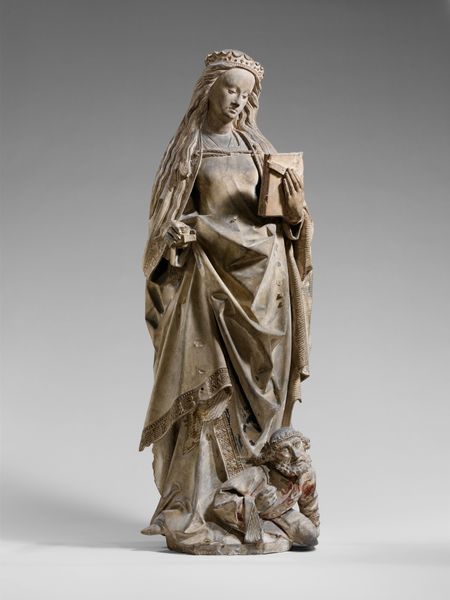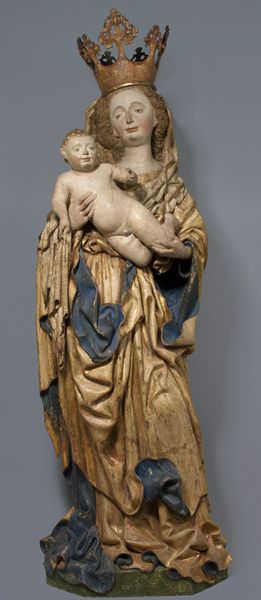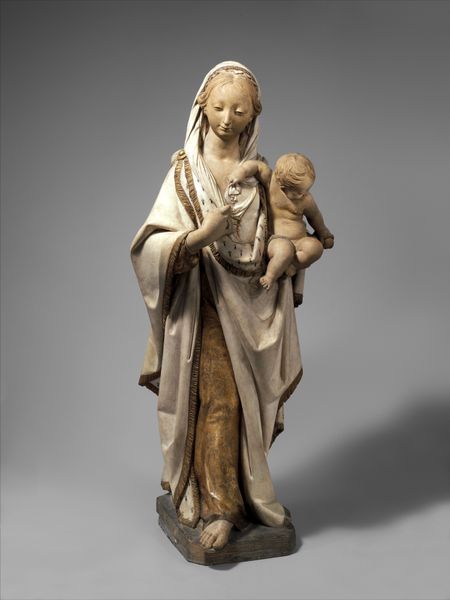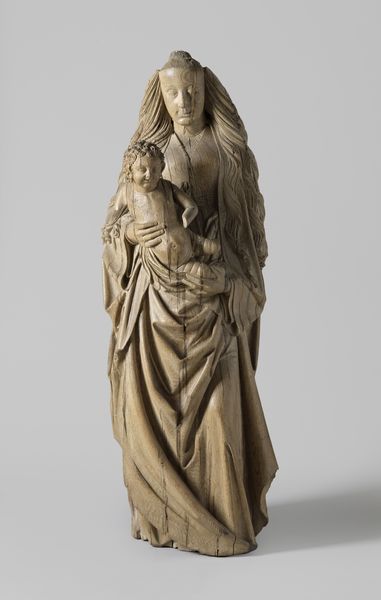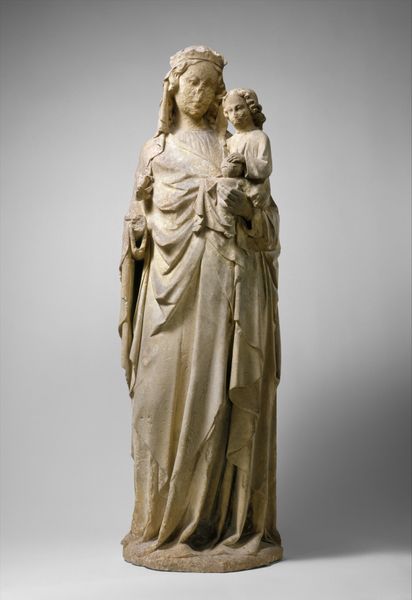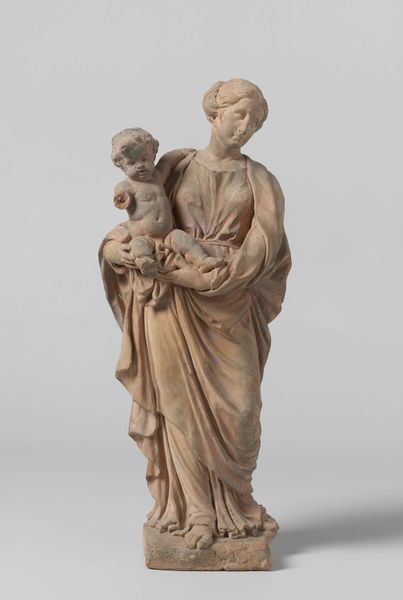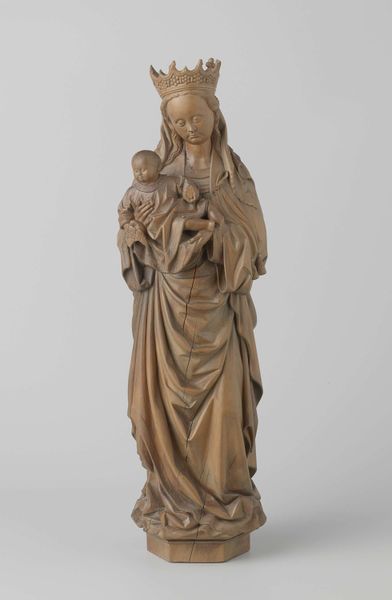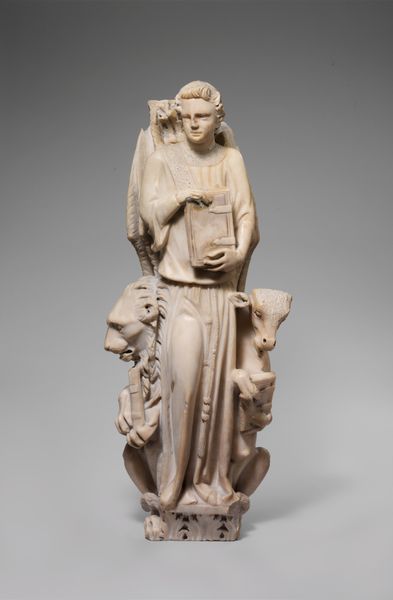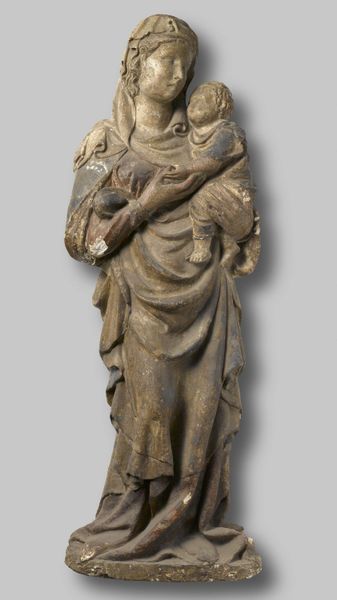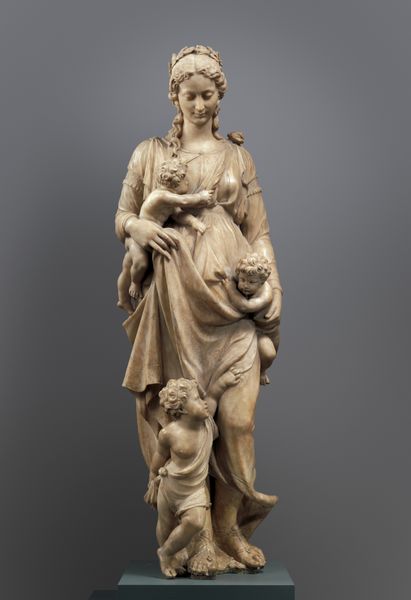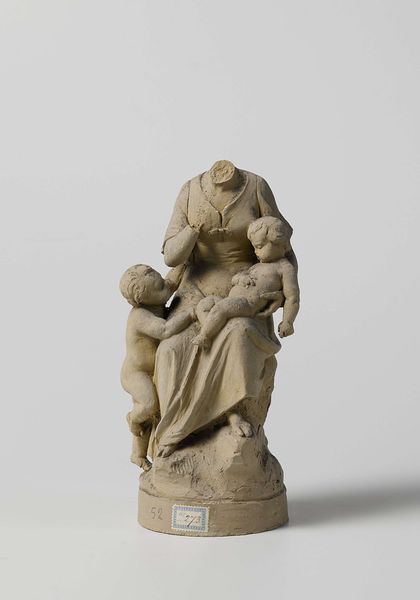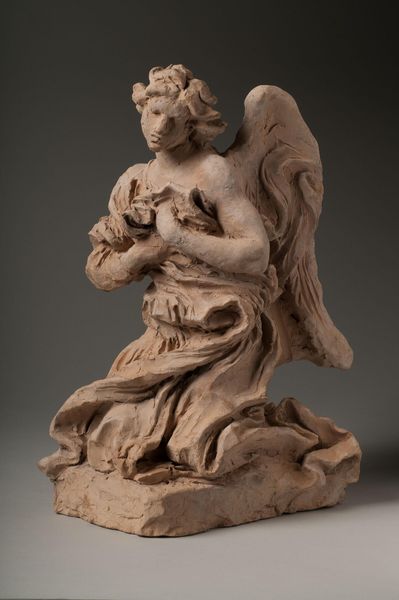
sculpture, wood
#
portrait
#
medieval
#
sculpture
#
gothic
#
figuration
#
sculpture
#
wood
Copyright: Public Domain
Editor: We’re looking at an anonymous wood sculpture from around the 14th century, "Madonna and Child." It's currently housed at the Minneapolis Institute of Art. The piece has an undeniable somber quality. What stories do you think this sculpture tells us about the period it comes from? Curator: That somber mood is interesting to unpack, isn't it? The downcast gaze, the slight rigidity... Often, when looking at depictions of the Madonna from this period, especially given its context in the late medieval period with events such as the Black Death fresh in cultural memory, we're not just seeing an idealized mother-child relationship. Instead, the art reflects a collective anxiety, a need for solace, and, crucially, the Church’s perspective on women’s role in society. How does it strike you in terms of power dynamics? Editor: The Madonna's lowered eyes do suggest submission, or at least a lack of overt agency. It also looks like a narrative imposed by those in power. I wonder about the artist and what constraints and freedoms they might have had when producing something that was more than an "artwork" and that would become a religious symbol. Curator: Exactly. We must also think critically about the racial and gender politics that are involved in this imagery. Whose story does it really serve? For example, this idea of idealised beauty excludes so many individuals, particularly non-white, poor and disabled. Do you find the child, being held, to be supported or contained? Editor: That's a powerful way to frame it. Thinking about it in terms of being 'contained', it definitely highlights the restrictive role imposed upon Mary and how the sculpture embodies complex social and political ideas prevalent at the time, rather than only devotional belief. Curator: Precisely. Analyzing art through a critical lens reveals these layered meanings, enriching our understanding not just of the artwork, but the culture that produced it.
Comments
Join the conversation
Join millions of artists and users on Artera today and experience the ultimate creative platform.
